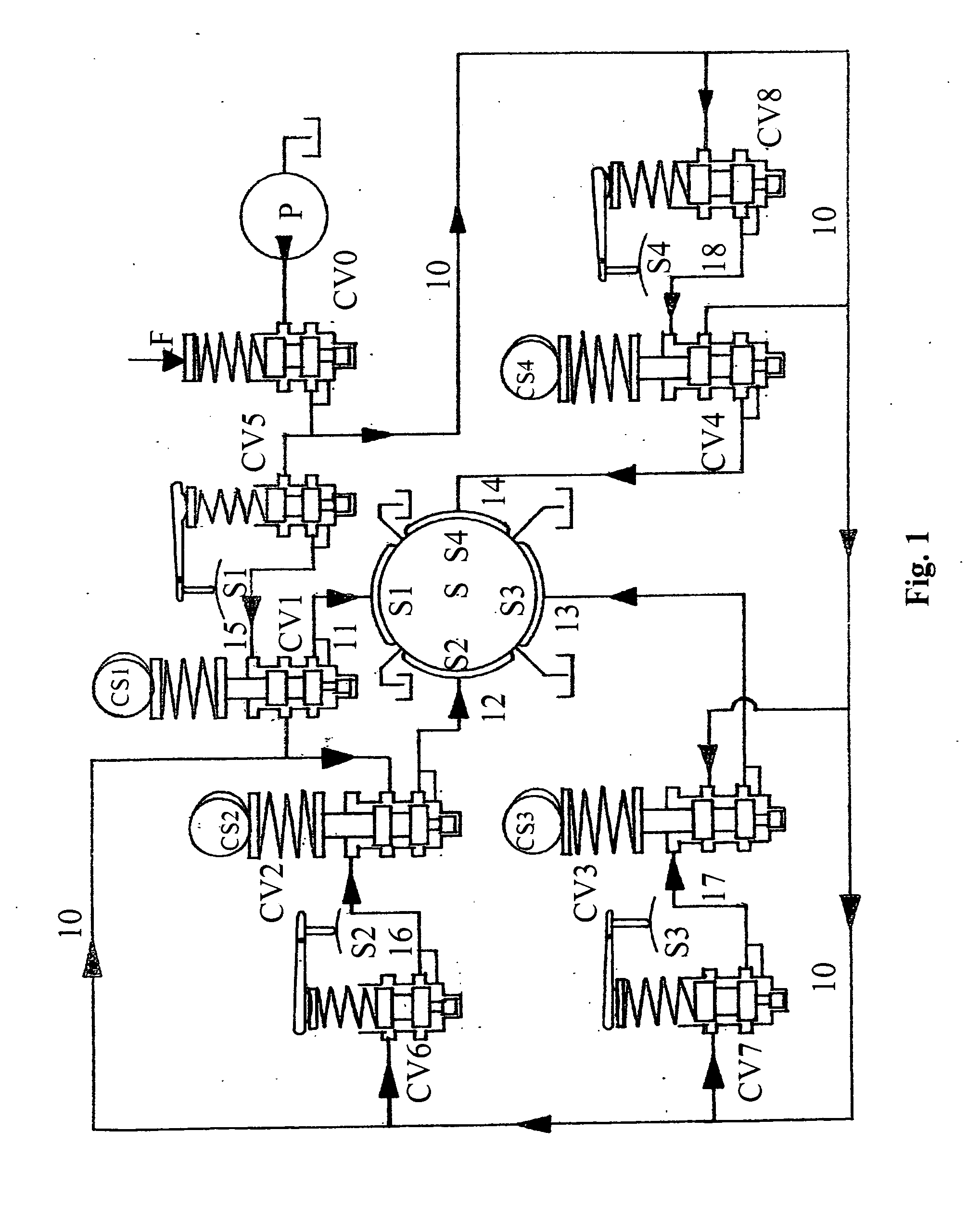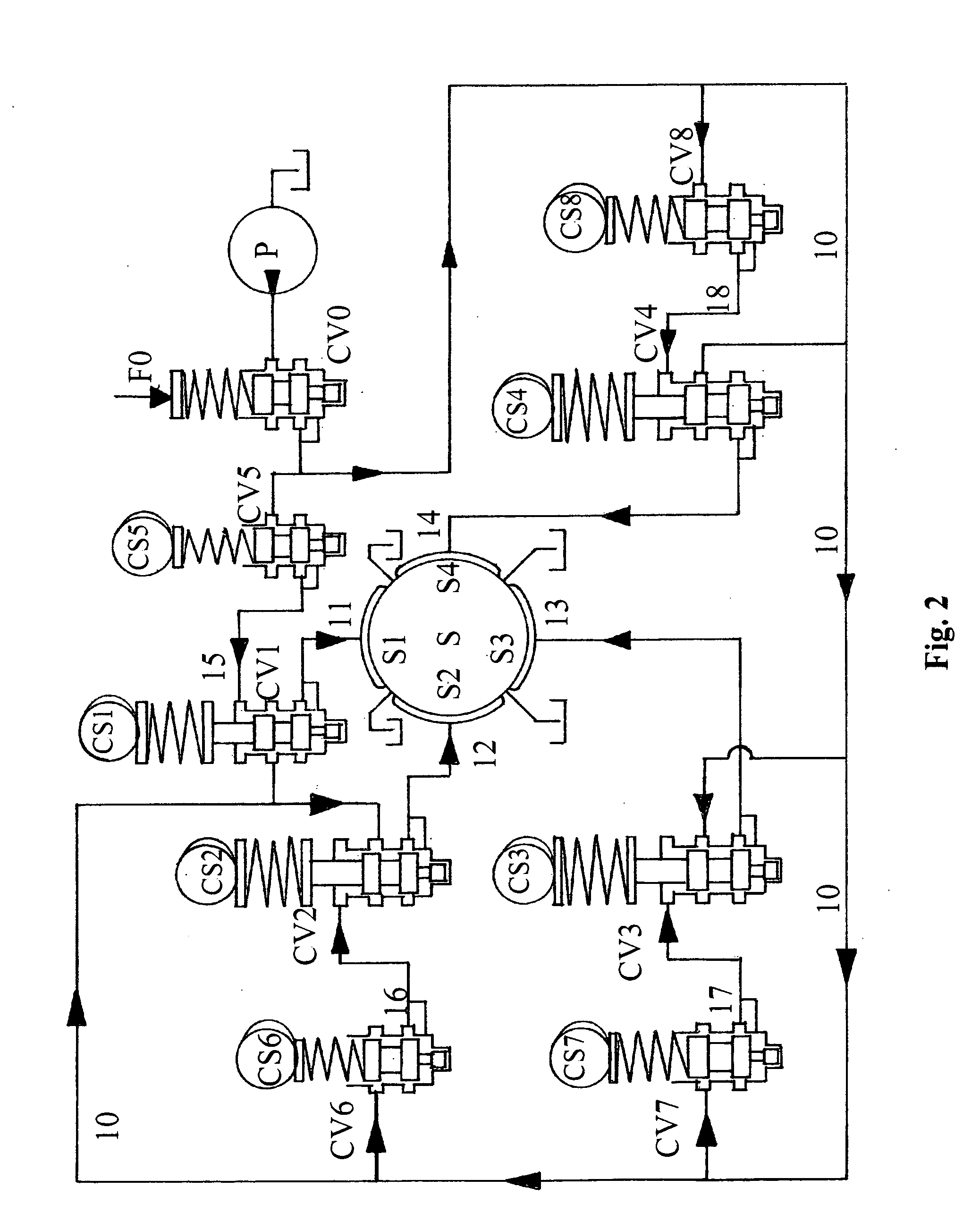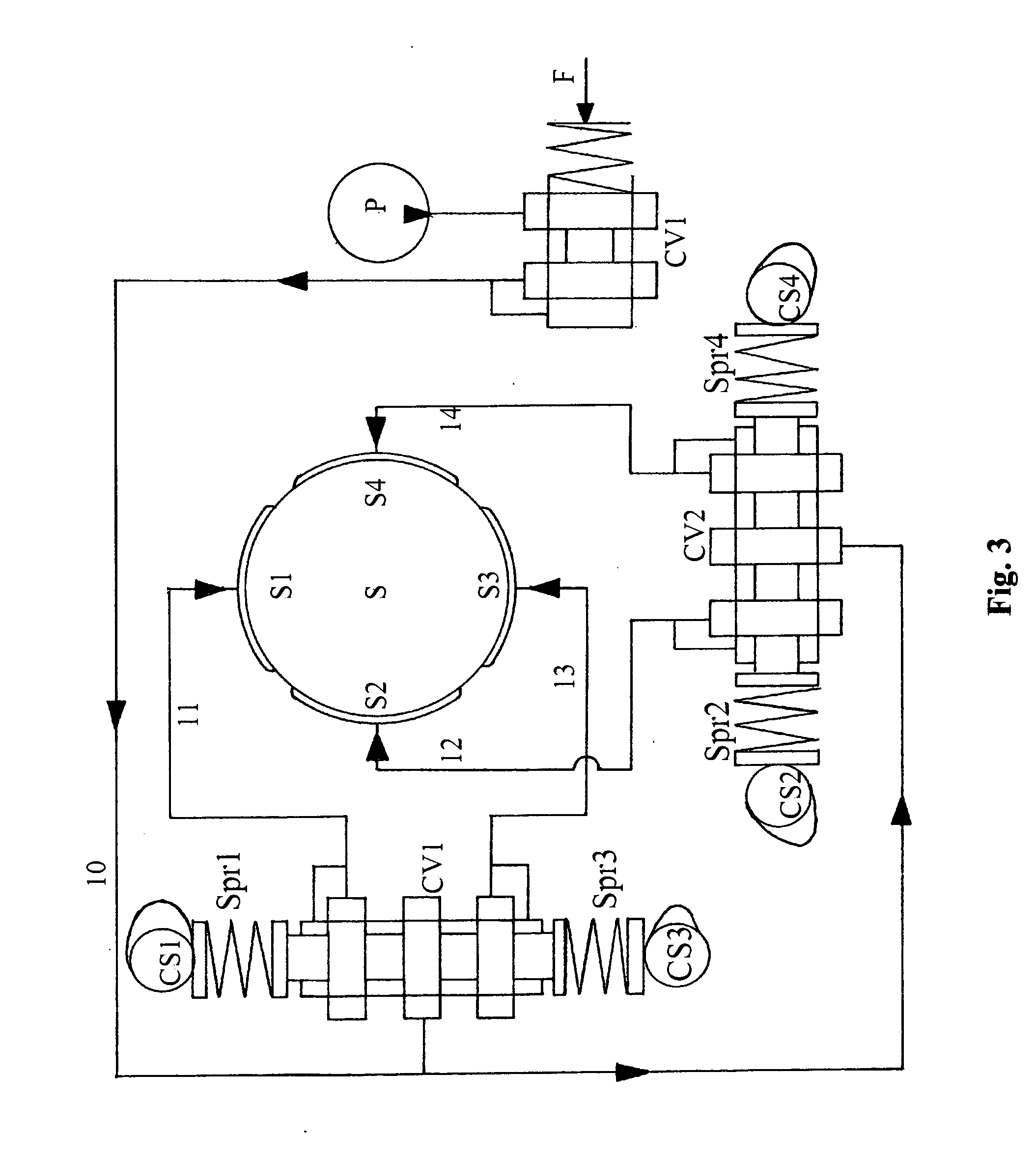Active hydrostatic bearing, particularly for internal combustion reciprocating engines, a fluid handling system associted therewith, and method
a technology of hydrostatic bearings and hydrostatic pressure, which is applied in the direction of bearings, liquid cushion bearings, shafts and bearings, etc., can solve the problems of reducing the power density of engines, reducing the efficiency of thermal and overall engines, and large mechanical energy consumption
- Summary
- Abstract
- Description
- Claims
- Application Information
AI Technical Summary
Benefits of technology
Problems solved by technology
Method used
Image
Examples
first embodiment
[0049]Another preferred embodiment of the invention, typically destined to support crankshafts of internal combustion engines, is depicted in FIG. 2. It is similar to above-described embodiment, the only major differences beeing an alternative destination of secondary control valves CV5, CV6, CV7 and CV8, presence of four additional cams CS5, CS6, CS7 and CS8, providing instantaneous setting of their respective secondary control valves, absence of a system for compensating random forces loading the shaft, and, in the case of four-stroke engines, an additional camshaft (not shown) rotating two times faster that the main shaft (see FIG. 2). These alterations results from a different application of the general method of the present invention. Namely, external force F loading the shaft is represented as the sum of two other forces, typically, in the case of application to an internal combustion engine, the mass force FM and the gas force FG, and these forces are treated separately, rath...
embodiment 2
[0051]Another preferred embodiment, destined to support a crankshaft of a large two-stroke engine shares a general scheme with the second preferred embodiment described above, but utilizes different decomposition of the mass force FM loading engine's crankshaft (see FIG. 2). Namely, force FM is decomposed into the first order force FM1 having the period of 360°, and the second order force FM2 having the period of 180°. Next force FM1 is combined with gas force FG (having the same period as force FM1) into one resulting force, which in turn is decomposed into its “horizontal” and “vertical” components. Both the components are presented as difference of two convex functions, say F2−F4 and F1−F3, and said functions are represented by cams CS1, CS2, CS3 and CS4 as described above. Force FM2 is decomposed into its “horizontal” and “vertical” components, each of the components is presented as the difference of two convex functions, say F6−F8 and F5−F7, which in turn are represented by cam...
PUM
 Login to View More
Login to View More Abstract
Description
Claims
Application Information
 Login to View More
Login to View More - R&D
- Intellectual Property
- Life Sciences
- Materials
- Tech Scout
- Unparalleled Data Quality
- Higher Quality Content
- 60% Fewer Hallucinations
Browse by: Latest US Patents, China's latest patents, Technical Efficacy Thesaurus, Application Domain, Technology Topic, Popular Technical Reports.
© 2025 PatSnap. All rights reserved.Legal|Privacy policy|Modern Slavery Act Transparency Statement|Sitemap|About US| Contact US: help@patsnap.com



